I cried when I finished Katie Green’s Lighter than my Shadow. It’s a hard look at mental illness (anorexia in this case) and the recurring effects on a person’s physical and mental health. People with addictions are engaged in constant struggle against themselves, whether it’s because of an eating disorder, alcohol or substance abuse, gambling or other. It’s not simple to navigate this. Green provides a thorough look at her own life to show how this illness affected her.
I think this graphic novel meant so much to me because I’ve been struggling with depression for the last two or three years. I never quite can describe it to people who never experienced it. I’ve had similar feelings and thoughts that Green depicts here; A black cloud hovering over me, following me at every turn, sometimes growing to engulf me completely before receding and hiding until it eventually comes back. Each time I feel better and fall back down, it hurts even more. It compounds and build onto itself and it’s difficult to keep at bay no matter how hard you try. A fog dissipating, but still clearly visible on the horizon, just waiting to spread. Katie Green depicts it right, this stalking cloud, this self-loathing and repugnance at oneself’s actions and behaviour, this shame at feeling that way in the first place. I wish it weren’t this real. It’s one of the rawest, most honest depiction of depression and mental illness I’ve read in graphic novel form. I’d heard about this book upon it’s release in 2014, then published by Jonathan Cape, a sub-imprint of Penguin Random House UK and it was difficult to track it down in Canada. I’m grateful that Lion Forge has been able to republish this graphic novel and bring it to wider audience. I should also point out for the record that Lion Forge own the Comics Beat.
In Lighter Thank My Shadow, Katie Green recalls her struggle and tumultuous recovery from a serious eating disorder. It begins as Green sits at her desk, staring at a blank page while her black cloud floats around the room. It eventually gets channeled into her pen, a strong visual opening to show how personal this story will be. We follow her story from a young girl, hiding toasts behind her bookcase, to a teenager increasingly obsessed with control over food, and a young adult still struggling to get a handle on her condition. Those early signs of trouble begin to take a bigger role in her life. Her early years as a picky eater transform into anorexia and lead to hospitalization, recovery, mental health professional visits and eventually, to an abusive and quite traumatic encounter with a self-help guru. Katie Green catalogs her long road to recovery, the tumultuous ups and downs that came along the way.
This graphic novel is genuinely moving and a remarkable achievement. There’s a really strong moment early on during Katie’s childhood where she asks her mother what happens if you don’t eat. She responds quite nonchalantly “If you don’t eat, you fade into oblivion.” Which prompts young Katie to ask “What is a Blivion?” Katie adds to this innocent childhood moment on the next page as she narrates: “Years later, I would learn what oblivion meant. By then I was wishing for it.” It’s devastating, but instrumental to understand the depth to which mental health issues and eating disorder can lead to. We witness the road from a small crack widening into a bottomless chasm. Katie Green also provides a pretty clear rationale for why she thought making that book was so important.
One of the main attributes of Lighter than my Shadow is its length. Over 500 pages. This allows Green to take the time to show the symptoms and the impacts they have on her. We see the gradual shifts from being a picky eater to someone who is increasingly consumed by the consumption of food and the various unhealthy eating habits she develops. In one passage, we see her recall the ways to eat to ensure she doesn’t overeat, “Chew four times on the left… four times on the right… then two sips of water“. This becoming a ritual to be observed otherwise the world might collapse on her. It also allows to show the cyclical nature of mental illness. Too often, these types of tales focus on one specific incident and it’s recovery, but mental health is complex and doesn’t lend itself very well to simple stories. By showing not only the illness, but the recurring cycle that comes with it might give Lighter than my Shadow a grim tone, but it creates a deeply engaging story. We get to experience the multiple elements that lead to her eating disorder. The length of the graphic novel also works quite well at reinforcing the themes of the book, that illness and recovery is a long process.
Green’s use of a light coloured paper helps permeate the book with an additional layer of weight. She shifts between light beige, grey, and muted green throughout the book, each time using the coloured background to add context to events or to her moods and feelings. It’s an unusual way to proceed that occurs often, sometimes after a single page. I was struck by how these changes of colours shape the reading experience. Green’s figures are perfectly expressive, and the element of backgrounds set the stages nicely, but the colours really help to shape how readers shape the reception of each page. Even when Green depicts a nicer event, the colours remind you of this constant dreariness, that the dark cloud is never far away. Those colours are a constant reminder of the dreariness that her eating disorder is making her sick. They make her look pale and sickly. It’s a great use of coloured paper.
In the end, Lighter than my Shadow concludes in the bittersweet way. There is no miracle solution, there is only an ongoing process of healing. Green never offers a single path to become a healthy person. She suggests it might never go away, that life is a struggle that will never get any easier, that life is difficult and will only get more complicated until our final breath. But in the meantime, there can be moments of respite and happiness. There’s a path forward, but it’s up to each individual to find it. Green finishes the book by looking back at her childhood and kneeling in front of her younger self, hand extended, as if to say that all of this pain eventually led to something better. It’s too early to say it is a masterpiece, but it’s really close to one.
—
Lighter than my Shadow
Katie Green
Lion Forge, 2017
$19.99 USD


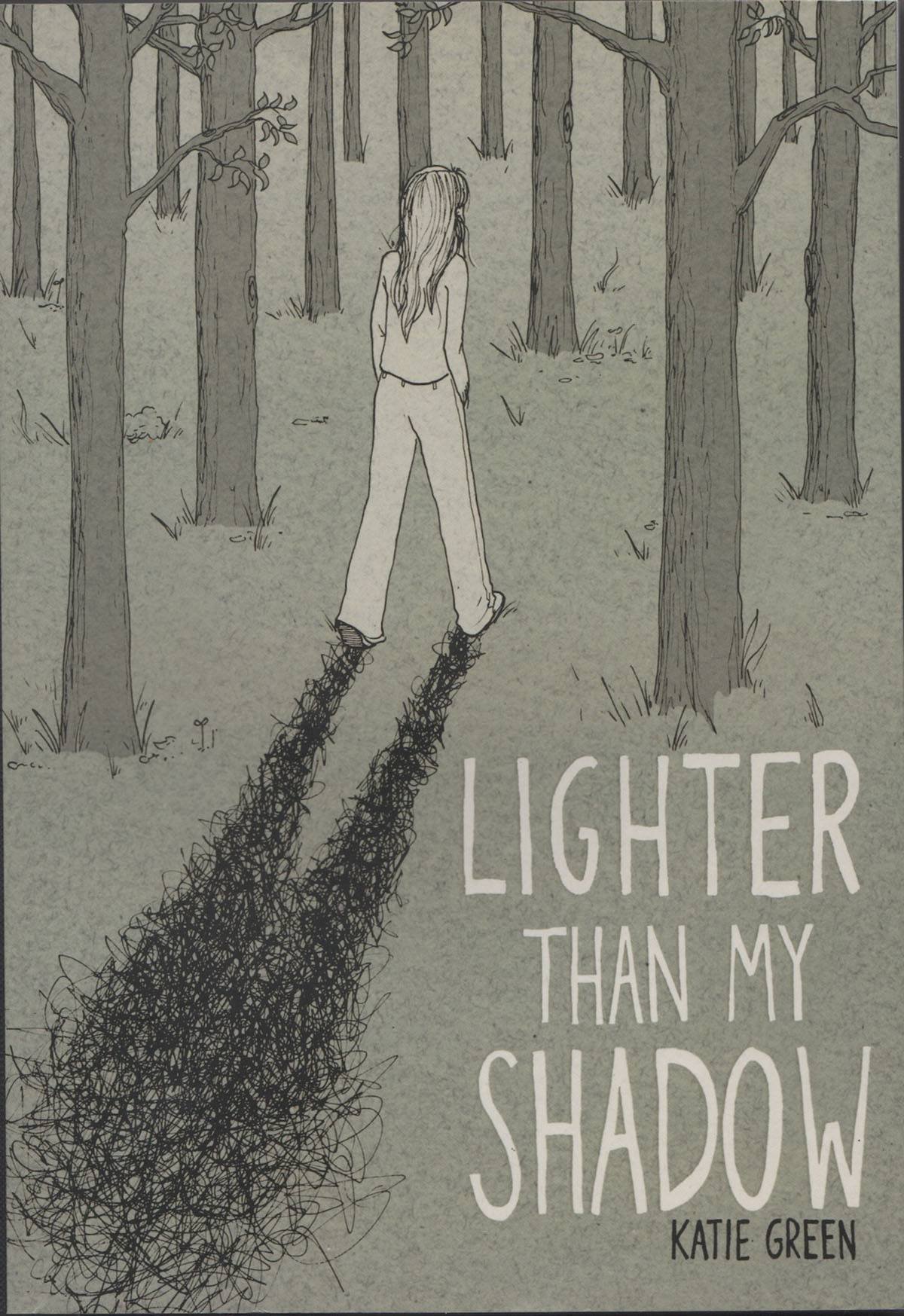
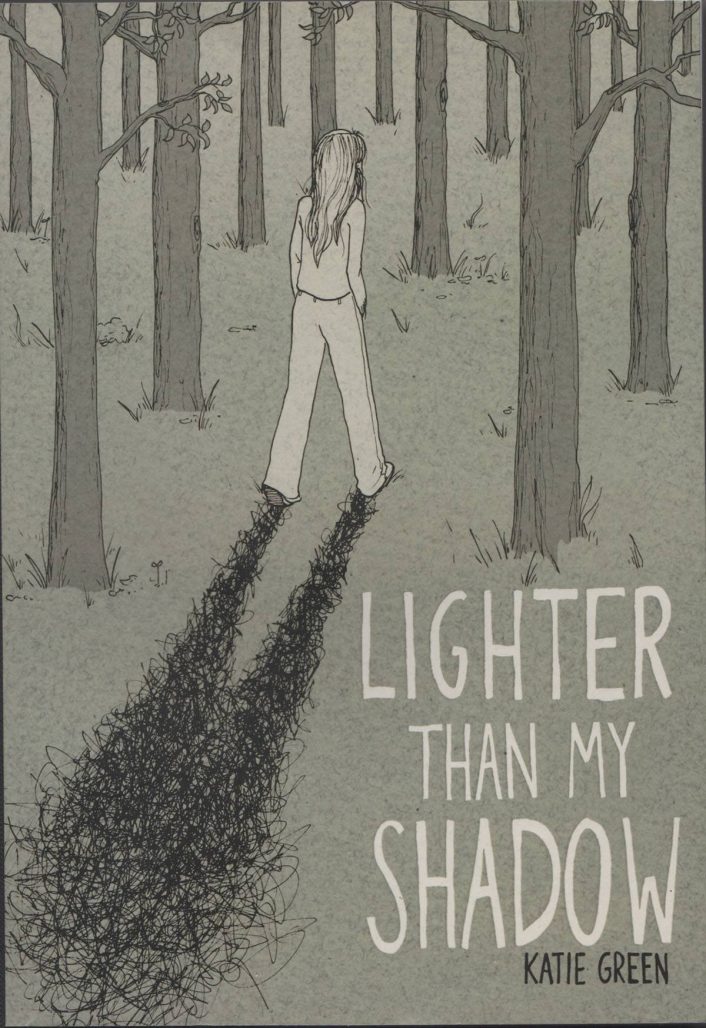
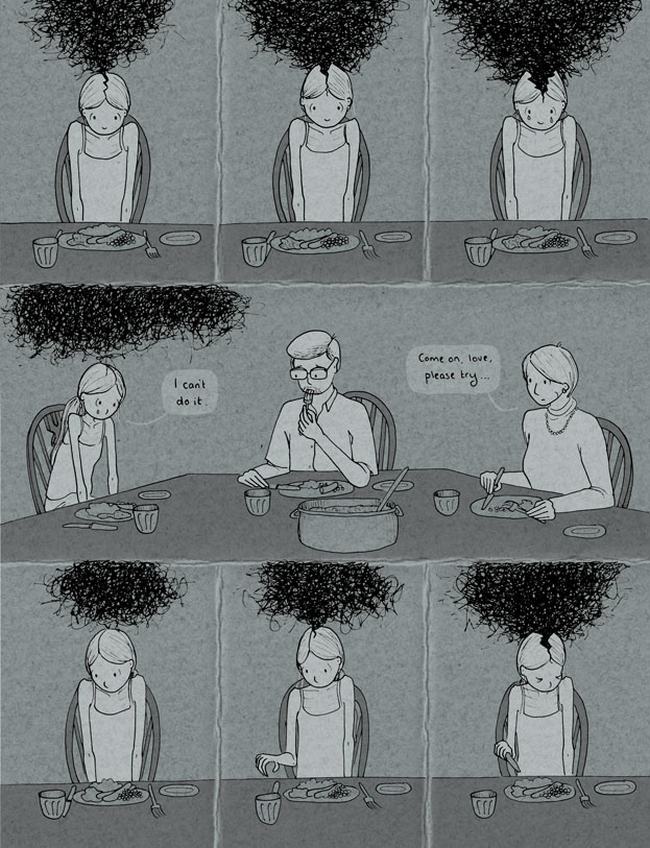
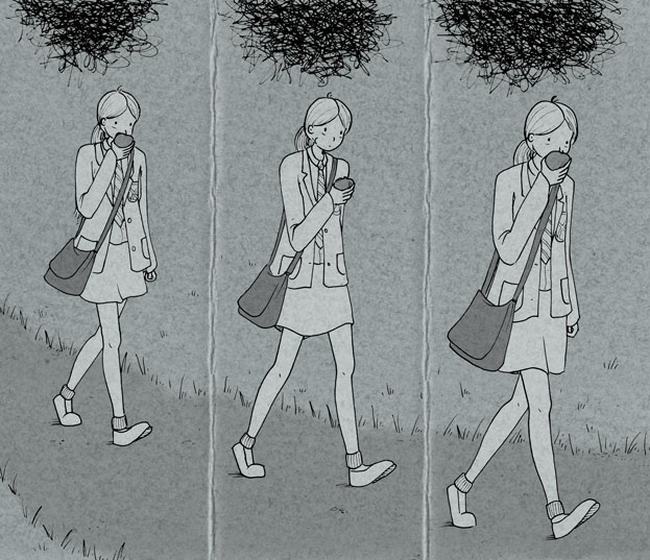
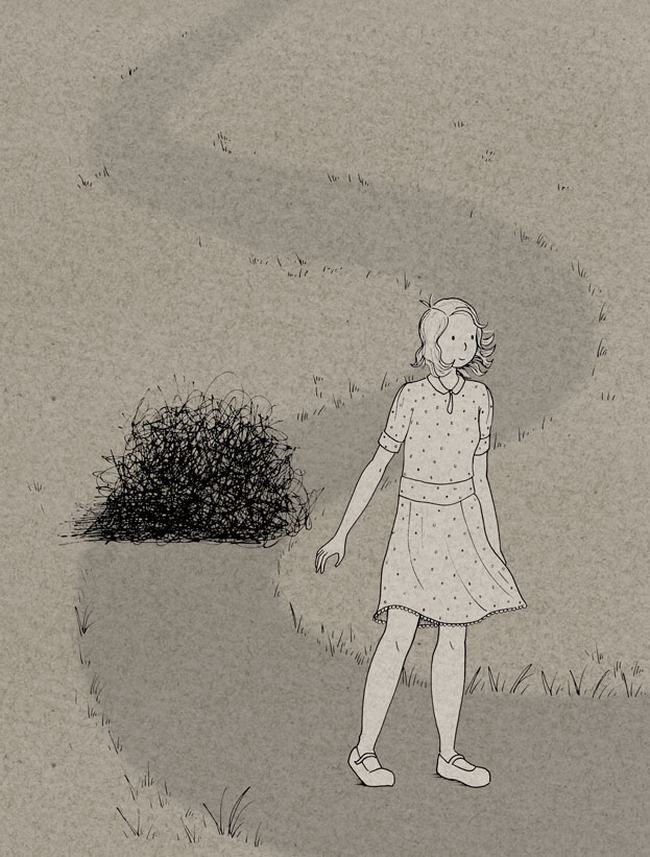

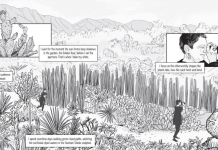
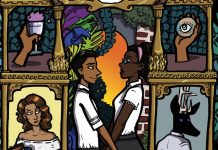


There’s now a diverse shelf of “graphic medicine”, from CUCKOO to ROSALIE LIGHTNING and from SPECIAL EXITS to EL DEAFO. They seem as useful as tools to med pros than they are interesting as documents to readers. Anorexia didn’t seem to be covered much in graphic nonfiction, so this one should be welcomed.
Also, sorry to hear about your troubles. Is it depression or bipolar disorder? About the latter, there’s Ellen Forney’s memoir MARBLES, or Chuck Rozanski’s article at MHC.
Thank you Simon, there is indeed a vast array of graphic medicine comics that are quite interesting. Rosalie Lighting was one of 2016 best graphic novel too.
It is indeed depression and not bipolar disorder. I’m working on it and getting better, but it’s a long process. Thanks for your recommendations. Hope you enjoyed you Easter long weekend
Now read and appreciated. Another strong moment is when she realizes, “Food is the medicine I need to get better. If I’ve got the will power to starve… I must have the will power to feed myself. All I have to do is eat. How hard can it be?” (p. 166–167) Of course, that’s where her real troubles began.
Also, it’s nice how Green can keep it both straightforward and almost light (considering), helped by her clear art and PEANUTS-like expressions. There are even some scenes that feel like dark-comedy relief, such as on p. 442, or p. 192–193 akin to a McCay DREAM OF THE RAREBIT FIEND?
(In related graphic fiction, you might like LUCILLE from Top Shelf, Ludovic Debeurme’s dark and delicate story of an anorexic girl fighting her illness after meeting a boy…)
(P.S.: Your STAGES OF ROT review has no comment form, is it okay to post about it here?)
Thanks, this felt even better than SOUND OF SNOW FALLING and it’ll be next Xmas’s GN in many stockings, supply willing? Also, it was a little like a game, for its clues to pick up and further the understated stories, or for its immersive world to revisit now and again, ala MYST or RIVEN?
There seem to be diverse influences: Moebius obviously, probably some Schuiten and Winsor McCay, maybe some Taiyo Matsumoto? And since you liked it, you may want to look into the otherworldly parts of Brandon Graham’s MULTIPLE WARHEADS and PROPHET, Moliterni & Gigi’s AGAR, or Topor & Laloux’s animated film FANTASTIC PLANET?
(And its perfect soundtrack was another 2017 release: Steve Roach’s spacey ambient album NOSTALGIA FOR THE FUTURE, see its Bandcamp samples…)
Comments are closed.